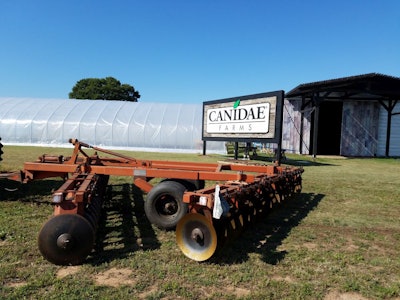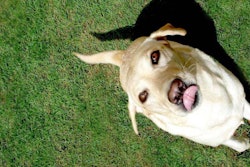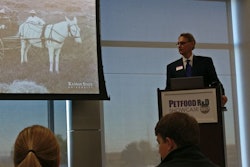
My visit to Canidae Farms last week came on the heels of the Petfood R&D Showcase, a pet food event co-hosted by Petfood Industry and Kansas State University’s Pet Food Science program. The Showcase spent three days focusing on the use of whole and ancient grains in pet food, via research presentations, hands-on workshops and industry networking events. Why is quinoa in pet food a discussion the industry needs to have? Because of pet food customers, of course, who are taking their experiences with the trends in their own food and extending them to their pets.
It's something the industry has come to expect and even try to predict, watching human food trends closely in order to catch on to the next big pet food trend before it hits. It has affected the way pet food manufacturers do business, and that influence is clear at Canidae Farms.
Simplifying pet food to reach pet owners
Canidae Farms is run by Clint Brauer in Cheney, Kansas, USA, just outside of Wichita, Kansas, USA. The farm runs on the idea of sustainability — no-till farming, sheep as a natural fertilizer provider, and ecologically aware technologies to control weeds and pests are just some of the ideas being put into practice daily. The farm’s products, which range from fruits and vegetables to grains and herbs, find their way directly into Canidae’s pet food formulations, significantly shortening the supply chain and ensuring Canidae has control over its foods from start to finish.
The benefits of having direct influence over your ingredients are clear. Transparency becomes significantly simpler when the origin points of your label list belong to you. Cutting out the middle man (however many there may be) reduces the risk of something going wrong along the supply chain. And perhaps equally important in this day and age of consumer demands: shortening the supply chain means you can more easily communicate with your customers about where their pet’s food is coming from.
Differentiation via consumer education
“Know your farmer, know your food” is a US Department of Agriculture (USDA) initiative, launched in 2009, that seeks to “strengthen the connection between farmers and consumers to better meet critical goals, including reinvigorating rural economies, promoting job growth and increasing healthy food access in America.” While this initiative is obviously aimed at human food, what Canidae Farms is trying to get across is largely the same: Pet food customers deserve to know where their pet’s food is coming from, and Canidae Farms intends to be an educator in that regard.
According to Erin Hannon, marketing manager for Canidae, the company doesn’t want to shove its brand in its customers’ faces. Rather, Canidae wants its name to be able to stand on its own merits, with customers coming to the company because they trust the products it’s putting on shelves as well as the people behind those products.
To that end, Canidae Farms has started releasing gardening-related videos that focus on successful agriculture first and branding a distant second. The first of these videos, coming in at 34 seconds long, finds Brauer explaining to his listeners how he deals with squash bugs at the farm. Canidae Farms is mentioned once, in passing. A Canidae Farms sign stands behind Brauer during his intro. The rest of the content is about squash bugs and the kaolin clay Brauer is using to combat them. Pet food isn’t even mentioned.
Is it counterintuitive to put out branded content that doesn’t mention the brand’s products? Perhaps. But Canidae is taking a different approach, wanting to reach customers in their own home gardens and use that avenue to build trust. It’s an education-first, brand-second strategy that the company is hoping will pay off as customers see that Canidae Farms is doing its best to provide high-quality ingredients farmed in a sustainable way, and that the brand is run by people just like Brauer, who love their jobs and love their pets as much as Canidae’s customers do.
It’s an attempt to make a human connection beyond the brand message; or, perhaps, to make human connection the brand message. And in a time where consumers expect more out of the companies they do business with, it may just be the way to go.
Briefly: covered at the Petfood R&D Showcase
- Alternative co-products streams from grains used in pet food applications
- Energy analyses and use of novel grains used in pet food application
- Harnessing cereal crop diversity for improved health
- Real nutrition for real working dogs: finding the right source of energy regardless of the name
- Using grain-based diets to maximize pet food safety
- Kill-step validation for food safety
- Teaching millennials and Generation Z: what you have to look forward to in your future workforce
Contact Me
















